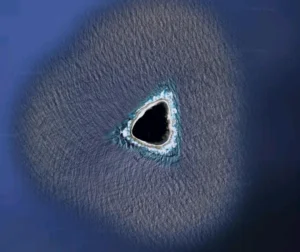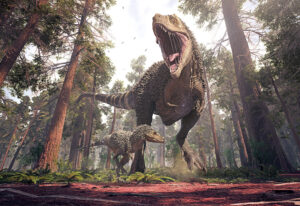Over the last 12 months, ExplorersWeb has documented incredible adventures in climbing, cycling, running, walking, skiing, and anything involving force of will and dedication to a dream in the outdoors. As this year comes to a close, we present our countdown of the Top 10 Expeditions of 2021.
A small number of people have cycled the length of North and South America, walked across Europe and Asia, run the width of the United States. All impressive accomplishments. Yet most of those mega-marathoners had a roof over their heads every night.
How do you rank a couple of guys who did a similarly long journey in which for most of the way, they slept in a tent in the Arctic, hundreds of kilometres from the nearest village, thousands of kilometres from the nearest road, and even further from the nearest hospital?
In mid-November, Guillaume Moreau and Nicolas Roulx cycled up to Point Pelee, the southernmost point of Canada. The pair had started 234 days, almost eight months, earlier at a small weather station halfway up Ellesmere Island. For 7,600km, they had hauled sleds, canoed, sort of canoed, and cycled almost the vertical length of Canada. It had never been done before. No one had ever tried. Such firsts are incredibly rare nowadays.


Background, Canada North to South
I followed this project with more than professional interest. Years ago, when I was just starting arctic travel, I’d had this Canada North to South idea. I kept it secret for years, thinking I might try it one day. Eventually, I realized that I was not interested in being out there for seven or eight months. Two months was my preferred expedition length. So in 2009, I threw the idea onto my website, and told friends about it, including my Inuit travel partner, Noah Noggasak of Labrador. Noah even wrote a term paper about it as part of an outdoor education degree.
In 2018, when Moreau and Roulx visited Noah’s town of Nain at the end of their excellent 1,500km canoe journey, Noah mentioned the idea to them. Several parties, seeing the suggested route on my website, had contacted me about it over the years, but their interest had never amounted to anything.
An outfitter I knew had even tried to organize this as a project for Les Stroud, TV’s Survivorman. The plan was to snowmobile the entire distance in a couple of weeks. Then Stroud could claim that he’d been the first to travel Canada North to South. I cringed when I heard about it. Luckily, it never came off.
When Moreau and Roulx took it up, however, I was relieved. They were doing the idea justice.
A canoeist’s route
Interestingly, they chose a different route than the one I had envisioned. As a sledder and sea kayaker, my route maximized those portions of the journey. Moreau and Roulx were canoeists. They sought to maximize the canoeing, so their route trended west, toward the Barren Ground canoe rivers.
Enterprisingly, they managed to organize a couple of small science projects and thus got permission to go to Nunavut, after a two-week quarantine. The territory had been closed to non-essential outsiders since the beginning of the pandemic.

Photo: AKOR expedition
Their journey began on Ellesmere Island, the northernmost land in Canada. Its northernmost point, Cape Aldrich, overlooks the Arctic Ocean. Next stop: the North Pole, just 760km away.
Financial compromise
But for financial reasons, Moreau and Roulx did not start at Cape Aldrich. The only way to Ellesmere is by charter aircraft from Resolute Bay, and the cost escalates quickly. They decided to start at the Eureka Weather Station, halfway up the island. Even that cost $24,000. It would have cost an additional $30,000 to fly to Cape Aldrich. These guys were not Everest millionaires, and perhaps they did not want to spend an extra year fundraising to do a relatively straightforward extra 600km.
Starting at Eureka meant that they couldn’t quite claim that their journey covered the entire Canada North to South route, just that theirs was the longest such journey ever attempted.
Moreau and Roulx began in mid-March, just two weeks after the sun has returned to that latitude. It is the coldest time of year, even colder than the dark winter, for some reason. Their heavy, 135kg sleds pulled reluctantly over the cold, abrasive snow. They were carrying supplies for 800km — the distance from Eureka to Resolute Bay, their first resupply point.
Cold beginnings
A third member, Jacob Racine, joined them for this portion. During the eight months, different partners accompanied them for different legs, but Moreau and Roulx were the constants.

Moreau and Roulx admitted that they endured rather than enjoyed the bitter cold and hard work of sledding. Yet they stubbornly stuck to schedule. They followed the twisty, frozen Eureka Sound, then skirted Axel Heiberg Island. From here, they crossed the giant expanse of Norwegian Bay, which took them over a week.
It was a relief when they made landfall at Devon Island, the world’s largest uninhabited island. (Axel Heiberg is #3.) Devon Island has been described as a legless donkey with its head thrown up to bray. They crossed it through a pass at the base of the donkey’s muzzle.

Photo: AKOR expedition
Rough ice, polar bears
They had planned to stick to the sea ice, but the ice south of the Devon pass was rough, and the polar bears were frisky. They encountered 10 bears in three days, one as close as six metres. It made sense to make for land and cross Cornwallis Island to Resolute instead. Cornwallis Island is a flat, barren asteroid, short on scenery but long on good hauling conditions. Resolute lies at its south end.
It had taken them three weeks before they began averaging, then exceeding, their 20km per day target. It didn’t help that Moreau injured his knee. Still, they soldiered on and reached Resolute precisely on schedule, after 40 days.
Battered and cold, they recuperated for a couple of weeks in Resolute. The village looks south onto a part of the Northwest Passage with strong currents. Sometimes the channel freezes solidly, and Inuit from town can snowmobile across to Somerset Island to hunt or fish. But now, in early May, the passage was a mix of open water, solid ice, and moving ice.
An unscheduled lift
Moreau and Roulx decided to charter a plane to hop the short distance across it. On a 7,600km expedition, that 80km wasn’t far, but it was always going to be the crux of the expedition. Eureka-Resolute had been so hard on them that one felt that they just didn’t want to handle something even harder at that time. Still, it was this disciplined expedition’s one sign of weakness, the equivalent of taking a helicopter to Camp 1 on Everest to avoid the Khumbu Icefall.
On the other hand, since they’d started a little short, it was never going to be a complete north-south transit. “We never looked at this expedition as a way to become professional adventurers,” Guillaume Moreau told ExplorersWeb later. “It’s not what we want to do. This was just for us.”

Photo: Kelsey Kushneryk
Starting from safe ice beside Somerset Island, they had 600km before their next resupply at the village of Gjoa Haven. Although the weather was mostly overcast and they often felt as if they were skiing inside skim milk, May is a great time to sled in the High Arctic. The runners glide quickly over the slippery snow. Temperatures are mild. They had no further close encounters with polar bears. They reached Gjoa Haven in just 24 days, averaging 25km per day.

A rare sunny day. Photo: AKOR expedition

The canoeing begins, sort of
In Gjoa Haven, Jacob Racine left the expedition as planned. Two canoeists, Philippe Voghel-Robert and Etienne Desbois joined Moreau and Roulx for the 700km journey to Baker Lake.
Although they swapped their sleds for canoes, actual paddling was rare. First, they had to drag their canoes across the deteriorating sea ice from King William Island, where Gjoa Haven lies, to the Canadian mainland. Then they had to wend their way up waterways that, in June at that latitude, are still mostly frozen or in the process of breaking up.

Crossing the deteriorating sea ice to the mainland. Firm ice still underlies the shin-deep meltwater pools. Photo: AKOR expedition
Originally, they had planned to paddle up the Back River. Instead, they opted to detour west through a network of smaller waterways that were already open. The larger lakes, however, remained ice-covered.
All the dragging badly damaged their old canoes, and repairs were frequent. Nevertheless, they kept to their strict schedule and reached Baker Lake in 34 days, one day quicker than planned.



Personnel issues
One of their new crew, Philippe Voghel-Robert, had not gelled with the others and flew home from Baker Lake. Luckily, Moreau’s girlfriend, Catherine Chagnon, was an experienced canoeist and was able to fill in during the next 1,100km south to the Saskatchewan border.
For most travelers, this stage would have been the hardest. The wind howled. Despite their canoeing experience, many days they simply had to stay put. Progress was so slow that they had to change their route again. They made for a lodge, where a plane was able to bring them fresh supplies so they could continue.





It was fall by the time they made it far enough south to reach a road. Although they still had 4,000km to go by bike, this seemed almost like a victory lap, after the previous 3,600km.
Finally, in mid-November, they reached Point Pelee National Park, near the Canada-U.S. border, and dipped their feet in Lake Erie, signaling the end of one of the longest wilderness expeditions ever.

Photo: AKOR expedition

Nicolas Roulx and Guillaume Moreau. Photo: AKOR expedition






